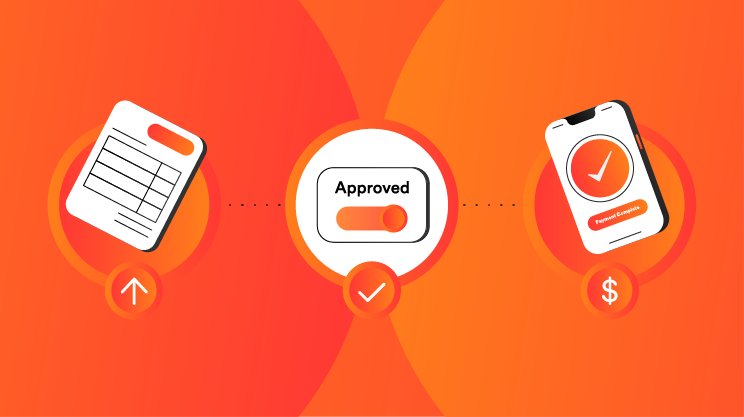How to simplify your company expense report process

Company expense reporting can be time-consuming and frustrating. Clunky processes often lead to a delay in reimbursing employees, which can put them under financial pressure. These processes can also blindside managers with a deluge of claims at the end of the month, disrupting operational planning.
Expense reports don’t have to be an administrative nightmare. A well-designed, simple, fair, and transparent expense report process can give you and your team a huge boost – here are the essential elements.
1. Standardize expense management templates
Whether or not you're using expense management software, it’s important to create standardized templates to make the expense reporting process more efficient. That way, you can avoid missing details or duplicated entries, find the information you need quickly, and ensure you're compliant with regulations.
There are ready-made templates you can use if you have accounting software or an expense management platform, or you can create your own. Just make sure it’s clear, consistent, easy to fill out, and has space for all the information you need.
Here’s a checklist of considerations when developing a standardized template for your company’s use:
Include all essential fields, for example, date, amount, vendor, expense category, and purpose. You'll need to customize the fields to meet your organization's specific needs and ensure that all necessary information for compliance is included.
Design the template in a user-friendly way, with clear headings, simple language, and intuitive layouts.
Consider creating both categories and subcategories, as needed, for expense tracking and financial analysis.
To promote adherence to guidelines, you can integrate reminders into the template to remind users of company policies related to expense reporting.
2. Create an effective expense policy
You can have the world’s most well-organized expense reporting process in place, but if employees don’t know how to use it properly, you’re still going to run into problems. Set aside the time and resources needed to create a well-designed expense policy and train staff on any new processes that you decide to implement.
When designing an expense policy, clearly state what expenses are allowable and align them with the organization’s goals and values. Allowable costs may include business travel, equipment and supplies, and client entertainment. Other work-related items, such as business attire and office transportation, are often not covered. It’s wise to set spending limits for different categories of expenses, and you may also want to impose an overall monthly spending limit. Don’t forget to explain how the approval process works and the steps you need to follow to report expenses.
Training and communication are key
Once the policy is in place, consider strategies to ensure that this information is fully absorbed, such as regular workshops, easy-to-understand guides, and accessible support for any queries. Continuous communication helps ensure compliance and ease of use so that expense reports are processed quickly and accurately. Some companies use communication tools or platforms that allow for instant messaging so that any problems can be resolved quickly.
You should also make it clear what will happen if employees fail to follow the expense management policy. If employees are using expense management software correctly, you can build rules into the process, which leaves less room for error or violation. If employees are submitting reports to you manually, on the other hand, take some time to think about the process for identifying and dealing with any violations of policy.’
Review and improve your process
Don’t just set your policy and then forget about it. The policy and expense reporting process may need updating as the company's needs evolve and in response to user feedback or analytics. To forge a culture of continuous improvement, use surveys, regular meetings, or suggestion boxes to gather employees’ thoughts and suggestions. Analytics and reporting can also be assessed to evaluate the performance of your expense management system, and changes can be made accordingly.
3. Automate your expense reporting tools
Automation is probably the most impactful change you can make to reduce the sting of company expense reporting, and it will yield bigger benefits the more claims your company processes. A survey showed that just over a third of large companies were still manually reporting expenses, using spreadsheets and paper forms, but the majority had switched to automated systems.
The writing’s on the wall regarding automation – it transforms the expense management process into something sophisticated and streamlined, bringing these
1. Access real-time data about company spending
The fact that all managers can access real-time data about company spending allows them to make well-informed financial decisions rather than having to guess what’s going on until the end of the month.
2. Increase internal compliance and trust
When it comes to compliance and regulatory standards, automation can also ensure that company expense policies are consistently enforced and in line with relevant rules.
3. Reduce errors and save time
The accelerated time frame of automated processing saves resources and boosts efficiency. A lack of mistakes can also save you from causing an administrative nightmare down the line, preventing further confusion and time loss.
A company with a small number of employees who rarely travel or need to purchase items can get away with manual expense reporting. However, expense management software is a smart step for growing businesses that are determined to increase their margins and get ahead.
How can company expense reports be automated?
Cloud-based systems are king when it comes to streamlined expense management. They reduce employee workload and improve accuracy by offering:
Receipt tracking: Forget keeping track of paper receipts; users can snap a photo of receipts using a mobile app, and the system automatically extracts relevant information.
Categorization and coding: Rather than employees manually categorizing data, machine learning can be used to categorize expenses based on predefined rules automatically. This speeds things up and minimizes errors.
Approval workflows: With automated approval, managers receive instant notifications for approval requests, reducing processing times. The platform can also make it clear at a glance where a request is currently positioned in the approval workflow, ensuring transparency and clarity.
Reimbursement: An operational bottleneck can form when there’s one person who has to go through expense claims, manually verify all the details, and activate reimbursements. An automated expense management system, on the other hand, can do all this instantly and effortlessly, without the same risk of human error.
Make expense reporting effortless with Airwallex
By automating processes, standardizing templates, creating clear policies, training employees effectively, and committing to ongoing improvement, it’s possible to make company expense reporting more manageable. The resulting system should be efficient, accurate, and user-friendly.
Choosing the right expense management software can also be transformative. That’s where Airwallex can help. With an Airwallex Global Account, you can instantly issue virtual and physical Corporate Cards for employee spending. These multi-currency Visa cards allow you to set a variety of spend limits or restrict purchases to certain merchant types.
When you activate built-in expense management, you can empower employees to submit expenses seamlessly on the go. Meanwhile, you or your managers can track, review, and approve all purchases from a single dashboard in real time.
Corporate cards for simplified spending.
Share

Airwallex’s Editorial Team is a global collective of business finance and fintech writers based in Australia, Asia, North America, and Europe. With deep expertise spanning finance, technology, payments, startups, and SMEs, the team collaborates closely with experts, including the Airwallex Product team and industry leaders to produce this content.
View this article in another region:AustraliaCanada - undefined
Related Posts

How to use Airwallex for automated insurance payouts
•5 minutes

BIN sponsorship | How it can help your business
•9 minutes
